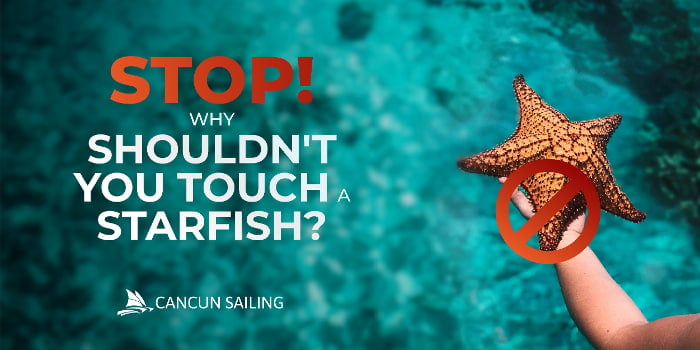
As we saw in other Isla Contoy Experience blog posts, Isla Contoy National Park is a naturally protected area by the Mexican Government. This means many laws currently exist to protect the island's land, marine fauna, and flora.
While Contoy is known as the Island of Birds (because of the number of birds that inhabit it), its Marine Fauna is just as vast and fascinating. You will find colorful fish, turtles, and invertebrates such as sea urchins and starfish.
Let's talk about starfish.
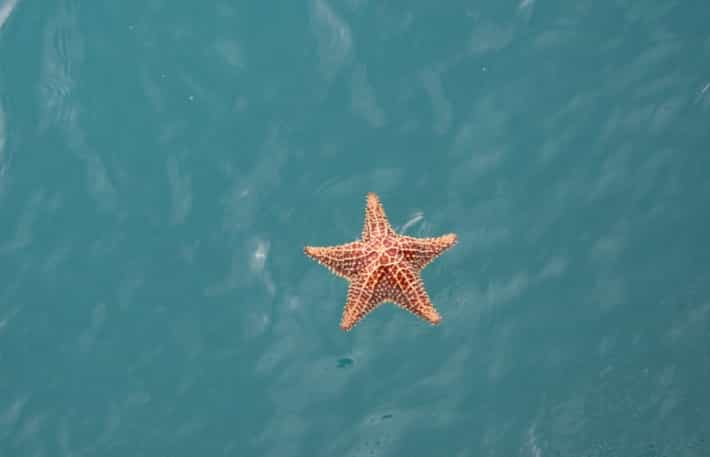
One of the most popular species in the Caribbean area is the starfish or Asterioidea. Although it lives underwater, it is not a fish. It is a type of echinoderm more closely related to sea urchins.
There are about 1900 different species of sea stars in the world; some are found very close to the shore, and others can live at depths greater than 6000 meters. They are present in all oceans but are not found in any freshwater habitat.
As its name suggests, its shape is that of a star. It has a central part and five arms (although some may have more extremities). Its surface can be smooth, granular, or spiny, and some sea stars can even regenerate their damaged or lost arms.
They feed on microorganisms through a filtering system on their underside but can also eat sea sponges.
They move thanks to the tiny legs on their arms and adhere to surfaces thanks to the suction cups located on those legs.
How long do starfish live?
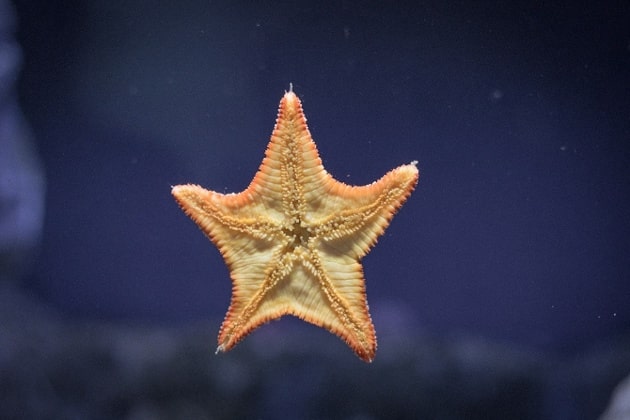
The life span depends on the species. Larger ones usually live longer than smaller ones, having a life span between 10 and 34 years.
Types of starfish
Among the starfish found in the Caribbean, we can observe:
- Cushion star (Oreaster reticulatus): The most famous species in the Caribbean waters. It has five arms with a rounded body. They are in soft sand, mangroves, lagoons, and shallow reefs. They grow as much as they feed, so the size of the specimens can vary greatly. Specimens up to 50 centimeters in diameter have been found. These stars are commonly taken from the sea, painted, and sold illegally to tourists.
- Ophionereis commutabilis: This species was first found in the El Aerolito cave in Cozumel, Quintana Roo, meaning it is a native species of the Caribbean and Mexico. It was found in 2019 and is considered one of the three sea stars living inside caves.
Other equally fascinating species found in other waters of the world are:
- Common starfish (Asteria's Rubens): It is present in all European seas except the Mediterranean Sea, from Norway to Senegal. It lives in coastal areas at depths of up to 200 meters in cold and tropical water. It can live up to 10 years.
- Velartids: There are eight genera in this family. Their body is chubby, and they usually have five limbs. This species is usually found at great depths.
Threats
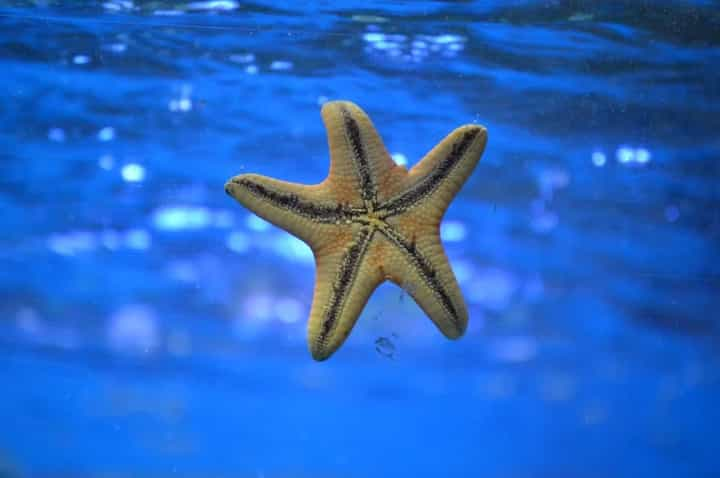
Because they pump water into their bodies, they are especially vulnerable to water pollution, as they are not very good at filtering water. Events such as oil spills have a significant impact on their communities.
Another constant threat to sea stars is predation by other species, such as crabs, conchs, fish, seabirds, and otters. Some species manage to defend themselves by secreting an unpleasant taste or toxins. Others have spines that make them unattractive to natural predators.
Studies have shown that many species of sea stars are vulnerable to high temperatures. The ocher sea star (Pisaster ochraceus) absorbs water to cool itself when exposed to the sun.
Its biggest threat is humans. Many starfish that wash up on shores or in shallow waters are handled and removed from the water, especially in tourist areas. Because of this, the starfish die due to lack of water. Some traders tend to take them out of the water to paint them and sell them as souvenirs, which affects their population.
Why shouldn’t you touch starfish?
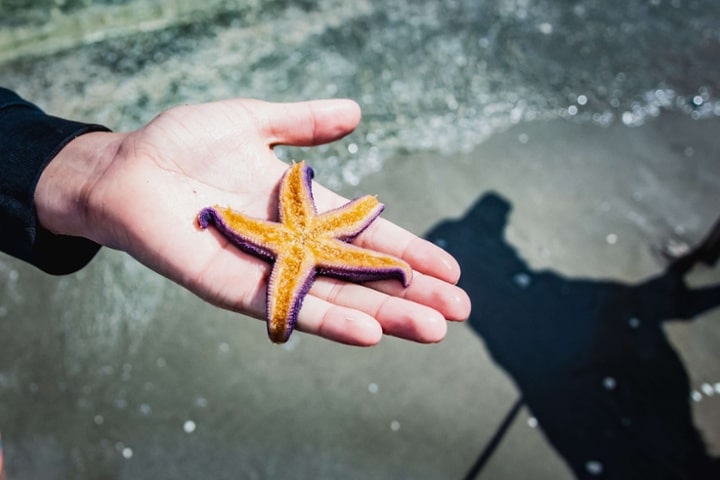
Everyone needs to understand the importance of not touching and not removing starfish from the sea. The reason starfish die outside water is that they cannot breathe. This leads to carbon dioxide poisoning and ultimately asphyxiation. Another common cause of death is stress from handling them too much.
How long can a starfish last out of water?
Starfish can resist between 3 and 5 minutes out of the water before dying. However, this is not an excuse to constantly take them out and put them in the water. As mentioned above, they can die from stress.
How do you know if a starfish is dead?
When starfish die, they lose their coloration and even begin to disintegrate or lose limbs. Another way (that qualified personnel use to check their state of health) is by analyzing the small suction cups on each of their legs. If the suction cups do not react or hang, it is a symptom of disease or death.
If the starfish has white spots or does not feel firm to the touch, it likely needs veterinary attention, specialized in marine creatures.
Can I touch starfish during the Isla Contoy Experience Tour?
No. Isla Contoy National Park is a naturally protected area by the Mexican Government. Therefore, if you handle any animal or species in this place, you will be subject to a heavy fine or even jail time.
If you are not in Isla Contoy and see a starfish, don't touch it! Respect all marine species, as each has an important role in its ecosystem. We can admire and photograph starfish without touching them.
How to take care of starfish
Several species of starfish have become extinct, and many are currently under threat from pollution and human manipulation. Unfortunately, this species is not protected by government laws in the Quintana Roo area, as they are not considered endangered.
As sea lovers, we can do some things to take care of the starfish:
- Educate visitors about the nature of these creatures.
- Denounce the starfish trade to marine protection agencies.
- Alert authorities to sources of pollution that may harm starfish.
- Reprimand those who handle starfish.
- Report those photographs of people taking starfish out of their ecosystems on social media.
With this guide, we hope you can understand and share why you should not take starfish out of the water. Your help is vital to care for our ecosystems and protect species as beautiful and vulnerable as sea stars.


 Giovanna Ricalde
Giovanna Ricalde



